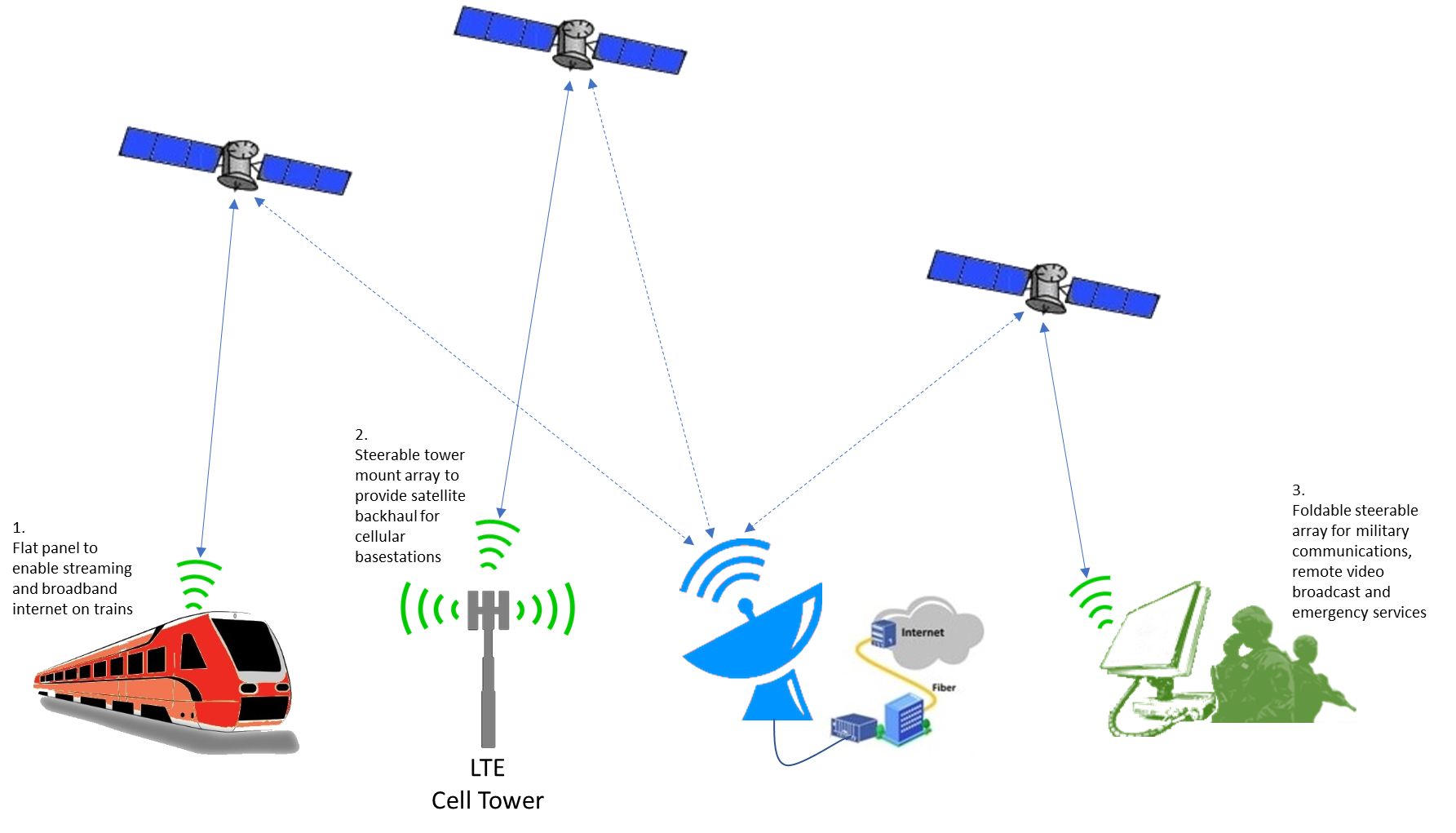PAGE CONTENTS
Objectives
Today’s mobile satellite terminals use either traditional dish antennas with mechanical steering or electronic arrays with amplifiers for each antenna element. These solutions are either heavy, complex mechanically and have high power consumption (dish) or have high power consumption (conventional electronically steered array).
The Sofant solution uses low loss MEMS to enable an alternative architecture of electronically steerable array. This architecture shares one amplifier across several antenna elements. Sharing the amplifier improves the efficiency of the amplifier, significantly reducing power consumption and reducing the cost of the solution.
Sofant developed a series of 16 element sub-arrays that can be assembled into much larger arrays. The sub-array construction uses the same assembly processes and suppliers as today’s smart phones. This allows us to drive down cost of the solution by aggregating demand across the SatCom and mmWave 5G market.

Challenges
The project overcame the challenges of developing a low loss, high bandwidth antenna and antenna feed network that is low cost to manufacture.
System Architecture
The Sofant Antenna Array Architecture consists of the following components: 4×4 antenna element Ka Band Tx sub-array; 4×4 antenna element Ka Band Rx sub-array; Tx Motherboard, Rx Motherboard.
The RF signal is connected to the Rx and Tx sub-arrays using connectors on the motherboard. The system demonstrates the core functionality of the RF chain and demonstrates the scalability of the overall assembly.
Plan
The project is split into 3 phases: Initial sub-array antenna prototypes; 2nd revision antenna array prototypes; Verification and validation of sub-arrays.
After the first phase an initial sub-array prototype was fabricated, along with basic measurement data.
After the second phase an improved antenna array prototype was fabricated and measured.
The final phase consisted of measurement, verification and validation of the 2nd revision antenna array prototype and motherboard assemblies.
Current Status
The project commenced on October 1st 2018, and has completed two months. The initial work is focused on substrate selection and the design of antenna elements and test structures using a new substrate technology
Companies

